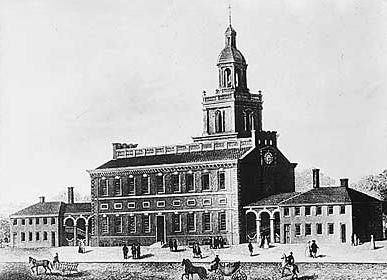Name Theophilus Cazenove Died March 6, 1811 | Books Cazenove journal, 1794 | |
 | ||
Theophilus Cazenove, or Theophile Cazenove (13 October 1740 – 6 March 1811), was a Dutch financier and one of the agents of the Holland Land Company.
Contents
Life and career
Theophilus Cazenove was born in Amsterdam on 13 October 1740, as the son of Théophile Cazenove and Marie de Rapin-Thoyras, French/Swiss Huguenots. His father was a merchant and banker in Bordeaux, Saint Petersburg, Archangelsk, Stockholm and the West-Indies; in 1759 he lost four ships loaded with sugar and coffee, which were taken by a Bristol privateer. In 1760 the elder Théophile gave up his business and his sons Charles and Theophile assumed control of the company. In 1763, Theophile married Margaretha Helena van Jever, the daughter of a tradesman in Russia, and a member of the vroedschap. Cazenove spent his early career in commercial transactions in France and Russia, but went broke in 1770. In the same year, his portrait was painted by Jean-Baptiste Perronneau. After the death of his father-in-law he was involved in a plantation in Surinam. In 1788 he collaborated with Étienne Clavière and Jacques Pierre Brissot, who both traveled to the United States.
In November 1789 Cazenove was retained by Pieter Stadnitski to travel to the United States to act as an investment agent for Stadnitski and other Dutch investors (Nicolaas and Jacob Van Staphorst, Pieter & Christiaen Van Eeghen, and Ten Cate & Vollenhoven). Casenove settled in at Market Street in Philadelphia, where he dealt with financier Robert Morris; his fellow traveller Gerrit Boon later went north. Boon believed that harvesting maple syrup could be a year-round activity, so slavery on the sugarcane plantations could be avoided.
In 1792 Cazenove invested his clients' money in development bonds issued by the new states and the federal government, after Alexander Hamilton promised to fully pay the debt. Another venture included investing in large tracts of undeveloped land in Genesee County, New York, which included the Holland Purchase. In order to implement these large and difficult purchases (sometimes complicated by the claims of Native Americans), he employed the advisory services of Hamilton and later Aaron Burr.
Cazenove lived well as a "grand seigneur" and was known for his extreme carelessness. His business dealings in maple syrup and canals were not particularly successful and the investors barely made any profit, even losing money in the Pennsylvania land dealings which he organized with James Wilson. He was also hard pressed to account for funds that were under his control. During this period he helped his cousin from Geneva to settle in Philadelphia. Alexander Baring wrote: "Cazenove is a sad dirty fellow and does all the mischief he can." In 1798 he hired Joseph Ellicott but Paolo Busti became his successor.
Although he became an American citizen in 1794, Cazenove returned to Europe in 1799. In Amsterdam he began to archive purchase of land for the financiers. He left the employment of the Dutch investors in 1802 and sought a position under Charles Maurice de Talleyrand-Périgord, who he had met in Philadelphia in 1795, when also Talleyrand invested in land purchase. Cazenove died in Paris in the Rue du Bac.
His correspondence along with the records of the Holland Land Company are held in the Amsterdam City Archives.
Legacy
A number of places in New York are named after him, including the Village of Cazenovia, Town of Cazenovia, Cazenovia College, Cazenovia Lake, and Cazenovia Creek.
